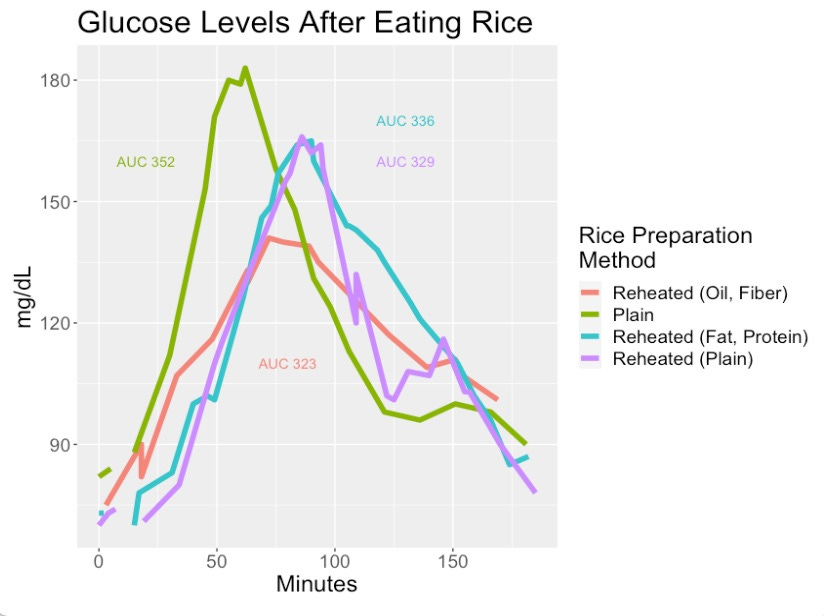Personal Science Week 230406 CGMs
Continuous Glucose Monitoring and more
This is a weekly summary, delivered each Thursday, of ideas we hope will be useful to anyone who wants to be a Personal Scientist, practicing science for personal rather than professional reasons.
This week we discuss the latest in continuous glucose monitoring (CGM), one of the most exciting personal science experiments you can conduct on yourself.
Your body’s glucose levels (aka “blood sugar”) is a key marker of your metabolism. If you or somebody you know suffers from diabetes, you’ll understand this well. Without regular and rigorous monitoring, diabetes can be fatal, literally within hours. Most diabetic sufferers have to be awakened every single night to check and possibly adjust their glucose levels.
Fortunately, the 40 million Americans with diabetes have access to great technology to help track and control their glucose, a huge market that generates spinoffs useful to everyone. Blood glucose monitoring kits are cheap and widely available, online and at any pharmacy or health products store. I personally use the Contour Next (under $20 at Amazon), but just about any kit will work as well.
For Personal Scientists, though, the best option is a continuous glucose monitor (CGM). This tiny wearable device, about the size of a quarter, attaches to your upper arm, where it painlessly tracks your glucose levels 24x7. You can view the results on your phone or desktop, where an increasing number of apps and websites let you study how your body reacts to different foods and conditions.

A practical experiment
Here’s an example of a simple experiment I did using my CGM and rice, a source of fast carbohydrates that almost always generates a quick and recognizable spike in glucose. Wearing a CGM for even a few days will give you a sense for why you’d ideally like to avoid these rapid spikes: the “crash” afterwards will make you feel sleepy, sluggish, or worse. Many professional scientists and nutritionists claim you can reduce these spikes if you eat reheated rice, or if your rice is always accompanied by foods that are high in fat or fiber.
I was disappointed to learn that, at least in this experiment, the effect was pretty minimal for me.
Those “AUC” values on the chart refer to “area under the curve”, i.e. the total amount of glucose rise from the time I ate the rice until the effect wore off three hours later. Lower values are better, so in this case the plain rice (in green) with its AUC of 352 was clearly better than alternatives like reheated rice (in purple) with its AUC of 329. But the reheating advantage didn’t significantly reduce the total amount of glucose my body experienced.
You can view more details on my personal web site.
Get your own CGM
The immediate, effortless feedback that a CGM offers has spawned numerous tech companies that will package a device, a doctor’s prescription, and other services like specialized reports and health coaching. You’ll pay about $300 - $400 for the service from companies like Levels Health, Nutrisense, January, and many others.
The not-so-secret fact is that all of these companies simply repackage the same device, the Freestyle Libre from Abbott Labs, which you can buy yourself at any pharmacy. So why pay $400 when you can do it yourself for a tenth the price?
Answer: because you’ll need a doctor’s prescription. The CGM resellers get around the required doctor’s prescription by issuing you one signed by their own in-house doctors. That prescription, plus an app to make it easier to track food intake — that’s why they cost $400.
If you’d like to try a CGM for yourself, my recommendation is to get your own prescription and buy it yourself directly from your local pharmacy. I pay about $40 for a unit that lasts two weeks. Be sure to buy only the sensors — don’t pay for the extra $200 “reader”, which you won’t need if have a smartphone.
The best way to get a prescription is straight from your regular doctor. Most physicians will happily write you a prescription if you explain that you will not be charging to insurance.
If you don’t have a regular doctor, another option I recommend is Tastermonial. For $40 they’ll give you a valid prescription which you can use to buy your own sensors at your local pharmacy, for a total cost well under $100.

More CGM Links of Interest
Glucose and glucose monitoring are mainstream enough that you’ll find great summaries at all of your favorite information sources. (Read mine from 2019). Here are a few additional ones we’ve found especially useful:
TheVerge thinks it’ll be a while before smartwatches will replace the CGM patch. Also see their nice Nov 2022 review of apps like Levels that includes a head-to-head comparison between a person with diabetes and somebody healthy.
Jessie Inchauspé @glucosegoddess Instagram account, with 1.8M followers, is the most readable summary of tips and tricks of glucose and CGMs.
John L. Smith’s “Hunting the Deceitful Turkey” is a 100-page PDF that details all the technical methods for making a continuous glucose monitors.
About Personal Science
People who do science for a living are professional scientists. Personal scientists do it for themselves. But you don't practice science by watching, no matter how wonderful you find nature or technology. Personal scientists treat science as a verb: something you do, not something you read about.
If you have questions or comments about Personal Science, especially if you have other topics you’d like us to cover, please let us know:



Libre vs. Dexcom?